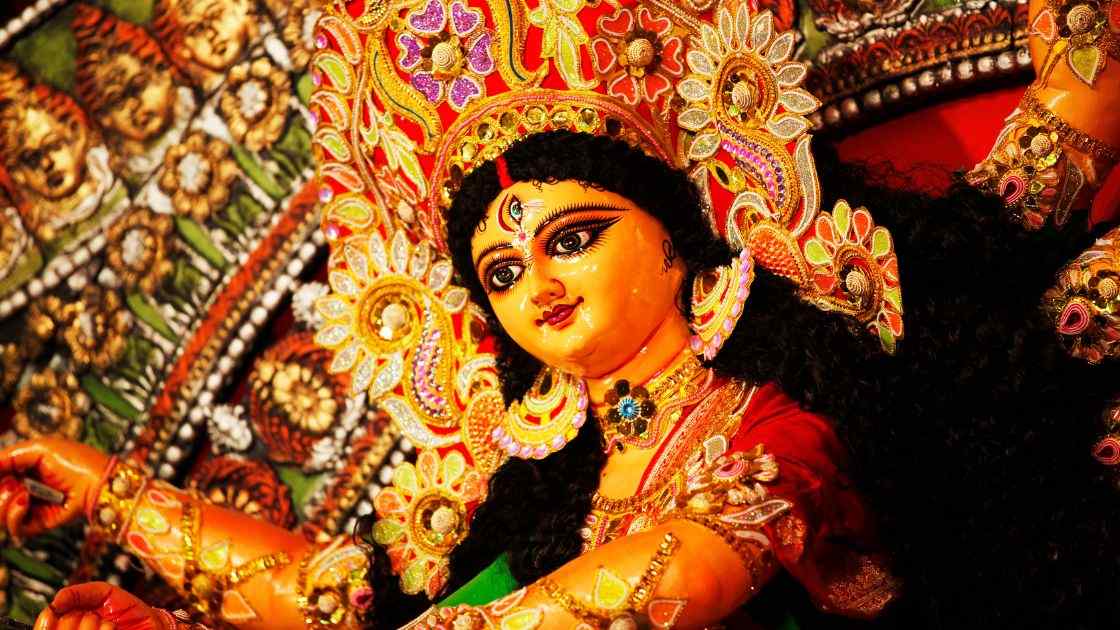Durga Puja

Durga Puja, also known as Durgotsava, is one of the most significant and widely celebrated Hindu festivals in India, particularly in the state of West Bengal and among Bengali communities worldwide. It is dedicated to the worship of Goddess Durga, who is believed to symbolize the divine feminine power and represents the triumph of good over evil. Durga Puja typically occurs in the Hindu month of Ashwin, which corresponds to September or October in the Gregorian calendar and lasts for ten days.
Key features of Durga Puja:
- Creation of Idols: The central focus of Durga Puja is the creation and worship of elaborately crafted clay idols of Goddess Durga. These idols, often depicting the goddess riding a lion and slaying the buffalo demon Mahishasura, are created by skilled artisans. Preparations for the festival, including the construction of pandals (temporary structures to house the idols), begin well in advance.
- Worship and Rituals: The festival includes various rituals and ceremonies. The idols are consecrated with prayers and offerings, and devotees perform aarti (ritual worship with lamps) and pushpanjali (offering of flowers) to the goddess. The rituals are accompanied by chanting of mantras and devotional songs.
- Traditional Dress and Decor: During Durga Puja, people often wear traditional attire, especially women who wear colorful sarees. The pandals are decorated with intricate and artistic themes, lighting, and decorations, creating a festive and vibrant atmosphere.
- Cultural Programs: Durga Puja is not just a religious festival but also a cultural extravaganza. It features a wide range of cultural events, including dance, music, drama, and art exhibitions. Traditional folk dances like Dhunuchi Naach and songs like Durga Aarti are performed.
- Visiting Pandals: People visit different pandals to admire the artistic creations and seek the blessings of Goddess Durga. Many pandals have unique and innovative themes, making the festival a showcase of art and creativity.
- Sindoor Khela: On the final day of Durga Puja, married women participate in a ceremony known as “Sindoor Khela.” During this ritual, married women apply vermillion (sindoor) to the idols of the goddess and to each other, symbolizing the longevity of their husbands and the well-being of their families.
- Immersion of Idols: On the last day of Durga Puja, the idols are carried in grand processions to nearby rivers or bodies of water for immersion, symbolizing the departure of the goddess. This event is known as “Vijayadashami” and marks the end of the festival.
Durga Puja is a time of joy, togetherness, and cultural celebration for Bengali communities. It holds immense cultural and religious significance and is a reflection of the rich art and traditions of Bengal. The festival has also gained popularity and recognition globally, attracting tourists and enthusiasts from various backgrounds.
Content Specific Keywords: durga puja kab hai, durga puja near me, durga puja wishes, durga puja song, durga puja pandal, happy durga puja, kolkata durga puja, unesco durga puja, how many days left for durga puja, durga puja in english, durga puja essay, story of durga puja, how durga puja is celebrated in india, durga puja kolkata.

